new posts in all blogs
Viewing: Blog Posts Tagged with: Erin Sherman, Most Recent at Top [Help]
Results 1 - 17 of 17
How to use this Page
You are viewing the most recent posts tagged with the words: Erin Sherman in the JacketFlap blog reader. What is a tag? Think of a tag as a keyword or category label. Tags can both help you find posts on JacketFlap.com as well as provide an easy way for you to "remember" and classify posts for later recall. Try adding a tag yourself by clicking "Add a tag" below a post's header. Scroll down through the list of Recent Posts in the left column and click on a post title that sounds interesting. You can view all posts from a specific blog by clicking the Blog name in the right column, or you can click a 'More Posts from this Blog' link in any individual post.
 by Kathy Stemke, Contributing Editor
by Kathy Stemke, Contributing Editor
Reading books with your children not only opens up the whole world to them, but often kick-starts their creative writing juices. When teaching creative writing to children, I’ve found that using maps, props, books they’ve read, or pictures help them organize their thoughts and create characters and a plot. Here are a few activities that will help your child get started.
CREATE A MAP OF A NEW WORLD
Draw the map of an island on a crinkled up paper bag. This will show that the map is old. Now add some features like mountains, caves, volcanoes, rivers, swamps, or lakes (This is a great way to give your kids a geography lesson!). How about adding an old, deserted pirate town? Remember that islands don’t have to be tropical. There are also rocky islands, jungle islands, and since this is an imaginary story, how about rainbow islands, candy islands, islands made of toys, or any combination of elements you want.
 Decide who lives on the island. Maybe it’s a clan of long-lost Vikings, rock people, wacky animals, or talking birds.
Decide who lives on the island. Maybe it’s a clan of long-lost Vikings, rock people, wacky animals, or talking birds.
Finally, start the story by bringing to the island a main character or two. What would happen when two kids get shipwrecked there, or a time-traveler shows up? They need to have a goal as well. It could be as simple as trying to get home, or finding an object that’s needed to save the world. Because you have a picture of your island it is easy to create a plot as your characters move from one part of the island to the other. Create a problem to overcome at each feature.
Try reading The Adventures of Grassie Green in the Colored Worlds by Steven Rox.
IMAGINE YOURSELF AS A TINY BUG EXPLORER
First, give your character a reason to explore. Maybe you’re looking for a lost treasure, a rare animal, or a cure for a terrible bug disease. As a tiny creature, everything looks different to you.
Use numbered Popsicle sticks and string to map out your journey in the yard. Wind the string around each stick as you place it in the ground. Each stick represents a problem that you must overcome to continue your quest. Maybe you have to get over a big rock, cross a puddle, get away from a hungry bird, or ride on a dandelion seed.
 Finally, solve the final problem and find what you’re looking for.
Finally, solve the final problem and find what you’re looking for.
Try reading The Little Squeegy Bug by Bill Martin and Michael Sampson.
HOW DID THE TIGER GET ITS STRIPES?
These types of stories are called folktales. Historically, they have explained things. Have your child draw a picture of his favorite animal. Make a list of the characteristics that make this animal unique. Write a story that explains how the animal got a particular trait. (How a tiger gets his stripes, how an elephant got large ears, why an eagle has a white head, or how a giraffe got a long neck.) Start the story about elephants when they had tiny ears. Tell us the problems the elephants had. Tell how their ears grew to solve the problems.
 Try reading Asian Children’s Favorite Stories: A Treasury of Folktales from China, Japan, Korea, India, the Philippines, Thailand, Indonesia and Malaysia by David Conger, Patrick Yee, Marian Davies Toth, and Kay Lyons.
Try reading Asian Children’s Favorite Stories: A Treasury of Folktales from China, Japan, Korea, India, the Philippines, Thailand, Indonesia and Malaysia by David Conger, Patrick Yee, Marian Davies Toth, and Kay Lyons.
No Tags
by Sharon Blumberg
 I teach Spanish to seventh grade students. After students and I return from holiday vacations such as winter and spring break, I need to mentally transition myself back into the school routine. If I need to do this, I figure my students need assistance with this, as well.
I teach Spanish to seventh grade students. After students and I return from holiday vacations such as winter and spring break, I need to mentally transition myself back into the school routine. If I need to do this, I figure my students need assistance with this, as well.
Sometimes, I ask my students individually to verbally share with the class what they did over break, or what they will be doing, if a break is about to begin.
One activity that encourages written literacy, and fluency along with self-expression, is what I refer to as Holiday Participation Strips or Tiras de Participacion in Spanish. Since most of my students are beginning Spanish language learners, they need to write on their notecards in English. I ask them to write at least four to six sentences in English about their favorite activities during vacation. Beforehand, though, I share and talk about my own highlights with them - to model and encourage an atmosphere of sharing.
This activity encourages written fluency because students are writing about enjoyable activities from their holiday vacations. They are also writing about a high interest topic they are quite familiar with, themselves! So even students who do not participate in the writing can individually reflect upon their experiences as a means to transition themselves back into school life, socio-emotionally. A few students sometimes ask to read about their experiences to the class before turning in their completed cards.
Since this activity is not part of the Spanish language curriculum, I don’t require everyone to take part in it. They have an option. I like giving students choices from time to time. Students who turn in a notecard to share receive credit. Students who choose not to participate will not have it count against their participation grade.
I tell students ahead of time that I will display the notecards for their classmates to read. Some students turn their cards in, but write a note saying they don’t want their card publicly displayed, and I honor that choice.
After collecting the holiday participation cards, I paste them on sheets of construction paper by class periods, laminate them, then post them on a display wall. Students occasionally peruse through the writings. They are allowed to read the cards during circulation opportunities within the classroom.
Their highlighted activities fall under a number of categories. Students enjoy writing about going shopping in Chicago, traveling with their families to exciting destinations, visiting with relatives, socializing with friends, watching movies, attending parties, receiving presents, and how they celebrated the holidays. Many students have written that they enjoyed sleeping later and having the time to watch television shows that they did not typically have time to watch.
The most exciting part of this activity for me is to read the little things that make my students stand out in unique ways. The contributions come under many categories, but all are written in their own personal ways. For example, one student shared that it was the first time he had traveled in an airplane.
This is a writing and reading activity that enhances literacy skills in the classroom. It fosters connecting instruction as we, together, transition full circle back into the classroom and the curriculum.
***********************
Learn more about Sharon Blumberg on OUR STAFF AND FACULTY page.
classroom activities,
Sharon Blumberg,
tips for teachers,
transition back to the classroom
from Suzanne Lieurance
 As a classroom teacher or home schooling parent, you want your students to be adding new words to their vocabularies all the time.
As a classroom teacher or home schooling parent, you want your students to be adding new words to their vocabularies all the time.
Here’s a fun way to help students take real ownership for new vocabulary words.
Create a word wall.
A word wall is simply a wall in the classroom - or the hallway - that is devoted to words and their definitions.
Any student can add to the word wall at any time.
As the teacher, you will need to have the following items available to your students at all times:
* Blank sentence strips or thick pieces of paper or tagboard
* Colorful Markers
* Masking tape, tacks, etc. for adhering the sentence strips to the word wall
* Dictionaries
Here’s how the word wall works:
Any time a student is reading and comes across a word he is not familiar with, he uses the dictionary to look up the meaning of the word. He then writes the word and its definition, along with his signature, on the sentence strip, then tacks the sentence strip to the word wall.
At a designated time during the day, students remove their sentence strips from the wall and they take turns presenting their new words and the definitions to the class. They can tell what they were reading when they came across this word and how the definition helped them figure out what that particular reading passage was all about. After the new words of the day have been discussed, have students tack them back up on the word wall. Encourage them to start using each others’ words during the day, whenever possible.
The word wall will grow and grow, of course. And, you’ll be surprised at how students will become POSSESSIVE - or take ownership - for their own words.
During other daily activities in the classroom, if someone uses a word in conversation that another student has tacked up to the word wall, you’ll probably hear that student say, “Hey, you just used MY word.”
And that’s what you want - students using new words, being aware that they use new words, and feeling a sense of pride and ownership in their expanded vocabularies!
Try it!
teaching new words,
vocabulary building
by Amy M. O’Quinn
 Can a little house on a hill smile happily while watching the sun and moon and stars all through the changing seasons?
Can a little house on a hill smile happily while watching the sun and moon and stars all through the changing seasons?
Can a little train engine talk herself into pulling a bunch of heavy cars up a steep hill by repeating, “I think I can, I think I can, I think I can?”
Can letters of the alphabet race to the top of the coconut tree?
Sure they can—if the writer uses a literary technique called personification!
WHAT IS PERSONIFICATION
Personification means giving human traits (qualities, feelings, actions or characteristics) directly to a non-living object. For example, the trees were dancing with the wind, the pot of soup bubbled merrily on the stove or the sun peeked over the hill. Obviously, trees can’t really dance, pots can’t be merry, and the sun doesn’t have eyes to peek over the hill. But what great descriptions for a reader to picture in his mind!
WHY DO WRITERS USE PERSONIFICATION
Many times an author will use this literary technique to add more fun, drama, sparkle, excitement, or interest to a story or to convey a certain mood. And because we are people, it is easier for us to relate to the object or to an idea that is being personified because we understand and identify with the human attributes that are being portrayed.
WHY TEACH PERSONIFICATION
It’s all about exposure! We expect a person with a well-rounded education to be able to recognize the most common elements on the periodic table or name the capitals of major countries. So should he have a basic working knowledge of common literary terms or techniques such as personification, onomatopoeia, oxymoron, anthropomorphism, alliteration, etc. You can find the definitions of all these terms and more at
MrBrainman. But learning these things can be a gradual process, and we can begin exposing our children to the terms and techniques while enjoying a good book together.
HOW TO TEACH ABOUT PERSONIFICATION
Parents can easily introduce the technique of personification when it occurs in picture books. Just have the child identify things that a non-living object simply cannot do. An object cannot act or feel like a real person—so that’s called personification. This is a great activity and one that can be handled naturally when talking about what can be real and what is pretend. The child probably won’t remember the term “personification” after just one introduction, but a base of knowledge is being built one term at a time. Again, it’s all about exposure! And I can almost guarantee that even a very young child will recognize when an inanimate object has been given human qualities! Children find such things to be very silly—and very fun!
PICTURE BOOKS THAT CAN BE USED TO TEACH PERSONIFICATION
Virginia Lee Burton was a master at using personification in her picture books. Who can possibly forget The Little House, Mike Mulligan and His Steam Shovel, or Katy and the Big Snow? Watty Piper’s The Little Engine That Could and Don Freeman’s Corduroy books are also classics in this technique. But there are many other picture books as well that can be used for teaching about personification.
Below is a great starting list. So check out these titles, and discover the fun of personification in picture books!
The Barn by Debbie Atwell
Best Loved Doll by Rebecca Caudill
The Caboose Who Got Loose by Bill Peet
Chicka Chicka Boom Boom by Bill Martin, Jr.
Corduroy books by Don Freeman
Hitty: Her First Hundred Years by Rachel Field
Jennifer and Josephine by Bill Peet
Katy and the Big Snow by Virginia Lee Burton
The Little Engine That Could by Watty Piper
The Little House by Virginia Lee Burton
The Little Red Lighthouse and the Great Gray Bridge by Hildegarde H. Swift & Lynd Ward
Little Toot by Hardie Gramatky
Maybelle the Cable Car by Virginia Lee Burton
Mike Mulligan and His Steam Shovel by Virginia Lee Burton
Miss Hickory by Carolyn Sherwin Bailey
Raggedy Ann Stories by Johnny Gruelle
Rikki-Tikki-Tavi by Rudyard Kipling
Smokey by Bill Peet
The Tree That Would Not Die by Ellen Levine
The Velveteen Rabbit by Margery Williams
********
Amy M. O’Quinn is a pastor’s wife and former schoolteacher-turned-homeschool mom of six. She is also a freelance writer who enjoys jotting down ideas around the fringes of family life. She specializes in non-fiction, and her work has been published in various educational and children’s magazines. She is also a product/curriculum/book reviewer for The Old Schoolhouse Magazine, a regular columnist for TEACH Magazine, and a member of SCBWI. The O’Quinns live on the family farm in rural south Georgia. You can find Amy at her new writing site/blog, amyoquinn.com. Or visit her personal blog, Ponderings From Picket Fence Cottage.
teaching personification,
using picture books to teach personification
Whether you’re a classroom teacher or a homeschooling parent, the best way to motivate your students is through some sort of authentic instruction.
What is authentic instruction?
Well, it’s simply instruction that is based on real world tasks.
Students can immediately see how what they are learning inside the classroom applies to their real lives both inside and OUTside the classroom.
A good way to provide authentic instruction is through games.
 When students need to learn certain skills in order to play enjoyable games, they will become engaged in the principles and concepts you teach because they will want to be able to use their new skills to play the games.
When students need to learn certain skills in order to play enjoyable games, they will become engaged in the principles and concepts you teach because they will want to be able to use their new skills to play the games.
The nicest part of this type of authentic instruction is that kids tend to pick up the skills needed to play these games rather quickly, simply because they are self-motivated.
For some great math games to help engage your students Click Here!
What kid doesn’t love riddles? The Math Riddle Book presents math practice in a way that kids enjoy! When kids complete a set of math problems, they’ll be able to decode the answer to a laugh-out-loud riddle!
It’s the fun way for kids to build the math skills they’ll need throughout their lives. Learning is easy and enjoyable when you’re solving puzzles!
 To order The Math Riddle book Click Here!
To order The Math Riddle book Click Here!
authentic instruction,
math games,
math riddles
.jpg?picon=694)
By: Writing for Children,
on 2/15/2009
Blog:
The National Writing for Children Center
(
Login to Add to MyJacketFlap)
JacketFlap tags:
New,
tips for parents,
Tip For Teachers,
reading strategies,
New Teacher Resource Center,
learning strategies,
New Teaching Coaching Club,
strategic instruction,
strategic teaching,
Add a tag
If you’re a homeschooling parent or a classroom teacher, you’ll want to join us this Thursday night for a FREE teleclass.
Click to listen and find out more about this event:
To register for this free event, JUST CLICK HERE and fill in your name, email address, and any question you might have about strategic instruction in the registration form.
learning strategies,
New,
New Teacher Resource Center,
New Teaching Coaching Club,
reading strategies,
strategic instruction,
strategic teaching
 This week’s Teaching Tips column comes from Sharon Blumberg.
This week’s Teaching Tips column comes from Sharon Blumberg.
Blumberg is a junior high Spanish teacher and a freelance writer. She has been teaching for 17 years. She currently teaches seventh grade Spanish in Illinois. She has two grown children and resides in Indiana with her husband and dog. She is an active member of The Children’s Writers’ Coaching Club and The Story Circle Network.
Enhancing Literacy Skills in the Foreign Language Classroom
As a seventh grade Spanish teacher of eighteen years, I strive to maintain a sense of variety in my class activities. Among these are what I refer to as “Culture Day” on Fridays. At the beginning of class on Fridays, I present a learning activity that deals with Hispanic culture or language.
One way I enhance literacy skills in the Spanish language is by selecting Bilingual Children’s books by Scholastic and I Can Read Spanish…Language Learning Story Books by Barron’s.
The Bilingual Scholastic books display beautiful illustrations of the concepts featured. Research states that when students are learning a foreign language, if phrases in the target language are paired with their native language, the language acquisition process is learned much quicker. As I read each page to my students, I read the paired bilingual phrases in Spanish and English. Even though these books are intended for a younger children’s audience, my junior high students enjoy eyeing the illustrations as the bilingual phrases embrace the pictures. Each book takes about five minutes in duration for me to read and present.
Among these books is Polar Bears, Osos Polares, by Susan Canizares and Daniel Moreton, September 2002, Scholastic Inc. This book displays illustrations of Polar bears frolicking in their native habitat of snow, ice and water. The phrases are brief as they demonstrate taking part in the gerund form of activities such as napping, descansando, and walking, caminando.
Another book from this series is titled Sea Creatures, Criaturas Marinas by Pamela Chanko, September 2002, Scholastic Inc. This bilingual children’s book displays colorful illustrations of sea creatures that inhabit the deep waters of the seven seas.
The Birds, Pajaros book from this series, by Susan Canizares and Pamela Chanko, September 2002, Scholastic Inc., displays colorful aspects of various kinds of birds.
Corral Reef, Arrecife de Coral by Susan Canizares and Mary Reid, December 2002, Scholastic Inc., displays beautiful, vibrant colors of life among the waters of the Coral Reef. This book does a nice job in teaching some basic colors in Spanish and English.
Frogs, Ranas by Susan Canizares and Daniel Moreton, September 2002, Scholastic Inc., portrays the life cycle of a frog while various kinds of photos of frogs are displayed.
For those braver in spirit and heart, you can present Snakes and Lizards, Serpientes y Lagartos by Daniel Moreton and Pamela Chanko, December 2002, Scholastic Inc., where various kinds of reptiles and aspects of their bodies are featured.
Within the I Can Read Spanish…Language Learning Story Books, the bilingual book, I’m Too Big, Soy Demasiaso Grande by Barron’s Educational Series Inc., gives the reader wonderful messages about embracing one’s individuality. Two animals, the giraffe and the elephant are depicted in humerous ways. Each animal takes on characteristics of the other in a silly way. For example, the giraffe gets very long ears and the elephant grows a long neck, like that of the giraffe.
The book concludes by each animal telling the other one that he is great as he is. The back of the book supplies the reader with a pronunciation guide for the Spanish phrases, read throughout the story. What a fantastic and creative way to teach such a wonderful concept! My students eagerly tell me the moral messages that prevale upon experiencing completion of the story.
enhancing literacy,
Sharon Blumberg,
teaching a foreign language,
teaching tips
 This week’s teaching tip article comes from Amy M. O’Quinn.
This week’s teaching tip article comes from Amy M. O’Quinn.
O’Quinn is a pastor’s wife and former schoolteacher-turned-homeschool mom of six. She is also a freelance writer who enjoys jotting down ideas around the fringes of family life. She specializes in non-fiction, and her work has been published or acquired by magazines including Jack and Jill, US Kids, Guideposts for Kids, Learning Through History Magazine, Highlights, GEORGIA Magazine, Homeschooling Today, International Gymnast, etc. She is also a product/curriculum/book reviewer for The Old Schoolhouse Magazine and a regular columnist for TEACH Magazine. The O’Quinns live on the family farm in rural south Georgia. You can find Amy’s blog, Ponderings From Picket Fence Cottage, at http://www.homeschoolblogger.com/picketfencemom.
NARRATION: THE ART OF RE-TELLING
Picture this cozy scene. You are sitting on the sofa with your little boy tucked closely beside you enjoying a wonderful picture book or an exciting read-aloud. Your son listens with delight and begs for more. So, of course you continue, talking about the pictures or what’s happening as you go along.
Later, when Daddy comes home, your little boy runs up to him and excitedly begins to retell (in his own words) the whole story in great detail. You know without a doubt that he has absorbed and comprehended what you read earlier in the day. Moreover, a month later, he retells the same story to Grandma, again remembering small details that you yourself have forgotten. Your child has naturally utilized one of the greatest learning tools there is, and one that will certainly help him in his educational endeavors as he grows older. It’s called narration.
WHAT IS NARRATION
Narration is simply the art of “telling back”, and it’s a technique often used by classical educators and those who employ the teaching methods of Charlotte Mason (a 19th century British educator). However, on a broader scale, it’s much more than that, and it can be used by anyone of any age to facilitate concentration, vocabulary, comprehension, memorization, language skills, and even writing skills.
WHY USE NARRATION
One of the easiest ways to explain the importance of narration is to borrow from Miss Mason herself. In some of her writings, she used the illustration of a sick patient in the hospital. The person was suffering from intense pain and the doctor had written the remedy on a piece of paper. He told her this would alleviate the pain, however, he would only let her look at the card for a few minutes. Then the card would be destroyed permanently, and the doctor wouldn’t write it again. Can you imagine the intense concentration the patient would put forth to remember what was written?
Although a small child naturally “tells back” what he hears, it’s a skill that should be encouraged and developed when he is very young. Because just think of the benefits when the child is older and needs to remember certain information. If he knows that he will be asked to ‘retell’ after a reading, he will definitely pay more attention to the material at hand so that his narration will be accurate. What he can tell—he knows! He has to think, sift through the information, and choose the important parts to narrate. He has to assimilate the material, make it his, and put it into his own words. With this concentrated effort, he WILL remember!
Charlotte Mason said, “What a child digs for becomes his own possession.” In addition, oral narration is only one step before written narration, which is basically composition! So technically, oral narration is a forerunner to processing one’s thoughts and putting words on paper in a way that makes sense. It’s a skill that’s invaluable.
NARRATION AND YOUNG CHILDREN
The art of narration begins very early, even before a child can read. As mentioned above, children love to “tell back” the stories they hear. And have you ever noticed a little one who will pick up a beloved picture book, turn the pages slowly, and perhaps ‘read’ it aloud to a younger sibling or even a favorite stuffed animal or doll? This is beginning narration, and the continuing pattern is a natural progression—if the child is encouraged and the skill is fostered. Too often, this desire to “tell” is schooled out of the child as he grows older. But language expression is so important, and the ability to organize and demonstrate the knowledge he gains from books is priceless.
IDEAS FOR USING NARRATION
We have established the fact that narration is a valuable learning tool, so let’s look at some practical ways to use it with young children. And because we want our little ones to retain their natural curiosity and desire to “tell back”, we don’t want to overwhelm them with heavy ‘educational’ language. Instead, a gentle approach is best; plus this early discovery stage is so much fun and a joy to witness. Many parents probably already do many of these things without realizing they are creating a solid foundation for future learning.
* Use high quality ‘living’ books. Even young children can appreciate well-written literature, and they will understand far more than we give them credit for.
* Do some pre-reading activities. Let the child look at pictures and guess what will happen in the story.
* When reading the story, use different voices, inflection, sound effects, and even suspenseful pauses before turning pages. If your child asks questions, answer them. It’s easy to become a bit frustrated when we want to read and they want to talk about what’s happening.
* Turnabout is fair play. Ask your child questions about the story or what he thinks will happen next.
* After you are finished reading, ask the child to retell the story in his own words…you’ll be surprised at the detail.
OTHER IDEAS
· Record your child’s narration on cassette or CD.
· Let him draw a picture to ‘tell’ about the story.
· Let him dramatize or act out the story, use a flannel board, or how about a puppet
show?
The possibilities are endless, and no matter how you choose to foster your child’s narrative ability, encouraging him to talk about or retell what he’s heard or read is extremely important. Narration is a skill that will pay great dividends farther along the educational road.
Amy M. OQuinn,
early literacy activities,
narration,
story re telling
by Renee Kirchner
 Cause and effect relationships are a basic part of the teacher curriculum for elementary aged children. Young children need to learn the basics of cause and effect to understand how the world works. Simply put, cause and effect is a relationship where one thing causes something else to happen. For example, if we play in the mud, we will get dirty. Playing in the mud is the “cause,” and getting dirty is the “effect.”
Cause and effect relationships are a basic part of the teacher curriculum for elementary aged children. Young children need to learn the basics of cause and effect to understand how the world works. Simply put, cause and effect is a relationship where one thing causes something else to happen. For example, if we play in the mud, we will get dirty. Playing in the mud is the “cause,” and getting dirty is the “effect.”
Picture books can be a useful tool for teaching the concept of cause and effect. Rather than listening to a lecture, children can enjoy a story and learn something at the same time. Before reading a picture book to your children, tell them to listen for key words such as, because, so, if…then, as a result of, etc. These types of words can usually be found in a story that has a cause and effect relationship.
There are three basic types of cause and effect relationships: stated cause and effect relationships, unstated cause and effect relationships, and reciprocal cause and effect relationships. For each type of cause and effect relationship, there are picture books to teach the concept. Here are some great examples to use with your students:
I. Stated Cause and Effect Relationship (it is clearly stated in the story).
The Runaway Bunny by Margaret Wise Brown

Each time a young bunny imagines running away from home, his mother is right behind him. If he becomes a fish, the mother will become a fisherman so she can catch him. The mother rabbit loves her bunny so much that she will follow him no matter where he goes.
II. Unstated Cause and Effect Relationship (children will have to read between the lines)
Tops and Bottoms by Janet Stevens

This is the story of a lazy bear and a clever hare. They are putting in a garden and the hare is doing all of the work. The clever hare tricks the bear into choosing either the tops or bottoms of the plants they harvest. When the bear chooses the tops of the plants, the hare plants carrots and other root vegetables. When the bear chooses bottoms, the hare plants lettuce, and other vegetables that grow above the ground. This book teaches that if you are lazy you will not reap any rewards. Children will have to read between the lines because the cause and effect relationship is not spelled out.
Legend of the Persian Carpet by Tomie de Paola

When a precious jewel is stolen from the palace of King Balash, he is very upset. He loved to go into the room in the palace with the jewel because it was filled with light. Many people try unsuccessfully to solve his problem until a peasant boy is able to help him.
III. Reciprocal Cause and Effect Relationship (One effect will cause a second effect and so on).
If You Give a Mouse a Cookie by Laura Numeroff

This is a classic cause and effect story where one actions leads to another action and then another. If you give a mouse a cookie, he will need a glass of milk to go with it. The story gets sillier and sillier before it circles back around to the beginning again. It ends on the same note that it began with the mouse asking for a cookie.
The Day Jimmy’s Boa Ate the Wash by Trinka Hakes Noble

Jimmy and his class go on a field trip to a farm. The children think the field trip is very dull until Jimmy pulls out his boa constrictor and then all kinds of chaos ensues.
Picture books can be used very effectively in the classroom to teach a number of reading skills. Once you start studying picture books there is no end to the classroom uses you will find for them.
Picture Books,
Tip For Teachers
From the library we borrowed a picture book titled "The Pocket Book," in which the character has ten pockets sewn on the front of her dress. I decided to do a dress-shaped project with TheSquirrel, (gluing on) ten pockets of different textures (scraps of fabrics or materials).
Then we wrote the descriptions of them, kinda like in the book. We wrote: "A scaly one, a roughy one, a dotty one, a plaidy one, a spotty one, a stripy one, a furry one, a purpley one, a silky one, and one to match my big blue eyes!"
What child doesn't like putting things into pockets? And, Hooray for glue guns!By: Erin Sherman & TheSquirrel, almost 4!
WhiteShoes
We discovered we can make little things with our fingerprints. Very fun, very easy, with very cute results! We were using stamp pads (work best, less mess), but for the colors we didn't have in ink, we used paint. Got it all from one book by Ed Emberley (view
here).
By: Erin Sherman & TheSquirrel, age 3.5
WhiteShoes
We made some fish we can "catch" with a magnet. Kids have just as much fun with plainlooking fish. But here is how we gave them some style:
I had her choose two colors of rectangles, and give each one a pattern with the same color of marker ("squiggles, stripes, dots, circles," etc)
Mine are on the left, hers are on the right. We drew a fish on one of these,
then cut them out, one on top of the other to duplicate.
We cut triangles out of one of them, which will be glued on top of the other...
Then put a paperclip on each fish, for a magnet-on-a-string to pick them up.
This design was my inspiration. I did this as my first experiment with my digital textures style.
By: ErinSherman & TheSquirrel, age 3.5
WhiteShoes
We made a corrugated frame to match The Squirrel's
new Farm Room!
Here's what we did: Take a piece of corrugated cardboard (on the edge, you see that inside is made of wavy cardboard):
Peel off the top layer to reveal the corrugation (easiest to have a tool like a pencil to run up the grooves) This part takes the longest so if your child will lose patience, have this done beforehand):
Then cut an opening of any size, paint and decorate! :
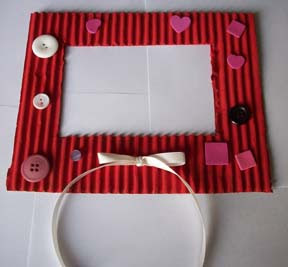
(Then put a piece of cardboard of the same size behind it with the picture inside.)
Here are mine that I made for our baby's nursery:
I drybrushed white on top of the main color, and I used wire flower decorations, very scrapbooky.
By: ErinSherman & TheSquirrel, age 3 1/2
WhiteShoes
TheSquirrel and I took a stroll in our backyard and had a scavenger hunt for nature objects like leaves, crabapples, a purple flower, a yellow flower, a clover, a walnut, etc. We pressed some leaves flat until the next day we could make these tree collages. (This was a few weeks ago when some leaves were falling but not all had changed color yet.) She sort of did what I did--hers is above and mine is below.
As I picked the orange papers for mine, she wanted pink for hers and I think pink turned out better-looking! The cutest thing is that when she was adding those tall thingys, she wanted to kindof "plant" them right into her "ground" by tucking them under the grass shape she glued down.
Now that the leaves are pretty much at peak color where we live,
here is something else I made with leaves!
ErinSherman & TheSquirrel, age 3
WhiteShoes
This is for
Holli's contest. I got more excited as I found more cool things in "the junk drawer."
TheSquirrel made her own as I made mine. She says it's a pig. Anyway, she copied a lot of things I was doing--very fun.
By: ErinSherman & TheSquirrel, age 3
White Shoes
The Squirrel and I tried a quick & easy technique. You paint on foil and
while it is still wet you draw on it with something dull, creating instant shimmering good looks. Here are the directions from the book I saw it in, which gears this technique toward homemade notecards:

Cut a rectangle of gold paper (we used silver aluminum foil).
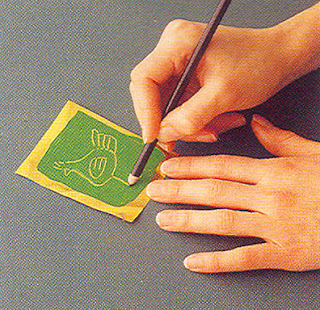
Apply a coat of paint and while it is still wet draw a simple design in the paint, then allow to dry.

You can cut around the scratched images leaving a small border (neater than what we did). Stick each one to a rectangle of colored paper.
Erin Sherman & TheSquirrel, age 3
White Shoes
My 3-yearold and I made a fish tank together. It's a clean empty meat container! This can also be done with the styrofoam kind. That's what I used when I made one of these with my Mommy as a girl...was always one of my favorite crafts I did with her.
You can even finish by covering the face of it with clear cling wrap! (wouldn't have photographed well). And you could glue sand or shells to the bottom.
We started by painting the inside of the container blue, then I cut out "seaweed" shapes with green construction paper and they stuck to the wet paint. I cut the fish shapes out of construction paper and we wanted to decorate the fish with some foam shapes we have. We could also stick the fish to the back but I wanted to try to suspend them from fishing line (no pun intended!) That, however, is tricky because of the way the line stays curled from being rolled on the roll. Well, one of them is hanging without being a little stuck to the blue paint...
By: ErinSherman & TheSquirrel, age 3
WhiteShoes
 by Kathy Stemke, Contributing Editor
by Kathy Stemke, Contributing Editor Decide who lives on the island. Maybe it’s a clan of long-lost Vikings, rock people, wacky animals, or talking birds.
Decide who lives on the island. Maybe it’s a clan of long-lost Vikings, rock people, wacky animals, or talking birds.  Finally, solve the final problem and find what you’re looking for.
Finally, solve the final problem and find what you’re looking for.  Try reading Asian Children’s Favorite Stories: A Treasury of Folktales from China, Japan, Korea, India, the Philippines, Thailand, Indonesia and Malaysia by David Conger, Patrick Yee, Marian Davies Toth, and Kay Lyons.
Try reading Asian Children’s Favorite Stories: A Treasury of Folktales from China, Japan, Korea, India, the Philippines, Thailand, Indonesia and Malaysia by David Conger, Patrick Yee, Marian Davies Toth, and Kay Lyons.


 I teach Spanish to seventh grade students. After students and I return from holiday vacations such as winter and spring break, I need to mentally transition myself back into the school routine. If I need to do this, I figure my students need assistance with this, as well.
I teach Spanish to seventh grade students. After students and I return from holiday vacations such as winter and spring break, I need to mentally transition myself back into the school routine. If I need to do this, I figure my students need assistance with this, as well. As a classroom teacher or home schooling parent, you want your students to be adding new words to their vocabularies all the time.
As a classroom teacher or home schooling parent, you want your students to be adding new words to their vocabularies all the time.  When students need to learn certain skills in order to play enjoyable games, they will become engaged in the principles and concepts you teach because they will want to be able to use their new skills to play the games.
When students need to learn certain skills in order to play enjoyable games, they will become engaged in the principles and concepts you teach because they will want to be able to use their new skills to play the games.  To order The Math Riddle book
To order The Math Riddle book  This week’s Teaching Tips column comes from Sharon Blumberg.
This week’s Teaching Tips column comes from Sharon Blumberg.  This week’s teaching tip article comes from Amy M. O’Quinn.
This week’s teaching tip article comes from Amy M. O’Quinn.
















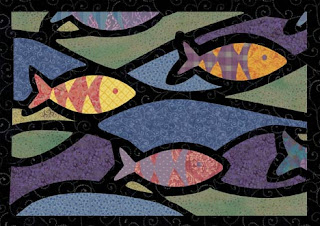

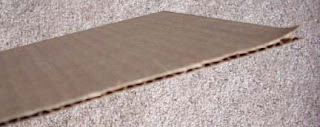
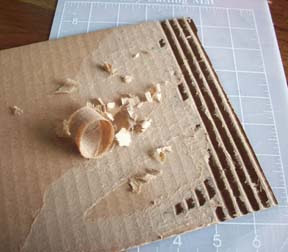


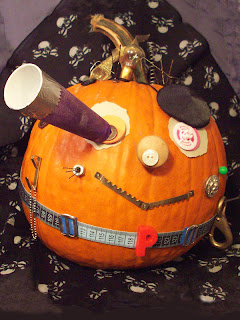
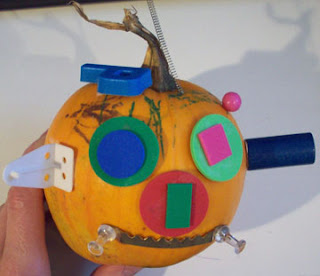
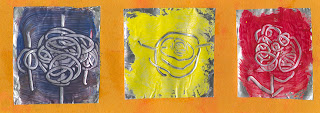



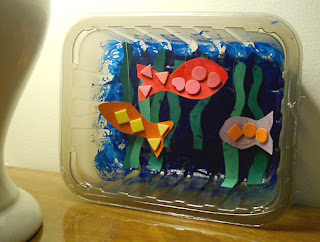
I was pleasantly surprised when I just recently read I’m Too Big to many of my classes, the students gave a sincere applause at the end. This made my day!